- Home
- Peripherals
- 3D Scanners
Best 3D Scanner in 2025 – Make Reality Your Playground
Updated: September 12,2023
With each passing day, advancements in technology make it increasingly easier to recreate the real world in virtual environments with amazing detail. One technique that has made this possible is 3D scanning.
3D scanning involves collecting data on objects - particularly on shape and color - and then using this to recreate 3D models. The level of accuracy in recreating models in line with their real-life counterparts is highly dependent on the type of scanner used. The best 3D scanner can achieve a level of accuracy that is truly awe-inspiring. But picking the right one can be tricky, considering the various limitations. So, which scanner is the best for which purpose and object? Find out here.
Matter and Form V2 MFS1V2
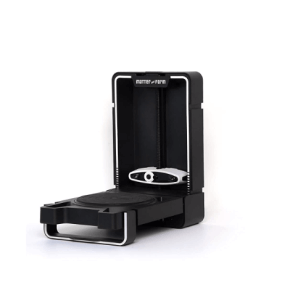
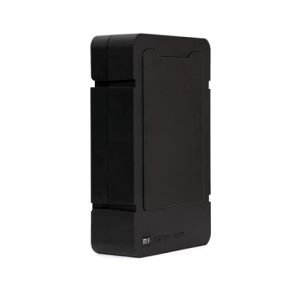

- Easily foldable
- Compatible with any printer
- Perfect for newbies
- Limited scanning capacity
Breaking the bank for a 3D scanner is not always necessary to attain good quality. You might think scanners below the price of $1,000 are the definition of a low-end, cheap scanner; however, they are anything but that, and the Matter and Form V2 proves it. If you are on the lookout for the best portable 3D scanner, the Matter and Form ranks highly, as it is easily foldable, and you can pack it up on the go.
The scanner’s accuracy is up to about 0.1 mm. It has a USB 2.0 interface for connecting to any Windows or Mac, so you can transfer your scans for 3D printing. It comes with a customized studio and software, MFStudio Software +Quickscan for editing scans.
The 3D scanner scans objects that are up to 25 cm tall and 18 cm in diameter. With its software and laser technology, it works best for newbies as they can learn and quickly understand the basics of 3D scanning. The V2 is probably the best 3D printer and scanner combo, as it’s compatible with any 3D printing software, so importing and creating 3D models is a breeze.
The Matter and Form 3D scanner is great for exporting scans in high resolution, specially built for accurate color representation. These can be used in many types of 3D applications. It also comes with an HD CMOS sensor with two lasers. Purchases typically come with a plastic toy you can use to make test scans, as well as a threaded camera socket that can be used to attach a tripod for holding objects in place.
SOL 3D Scanner by Scan Dimension
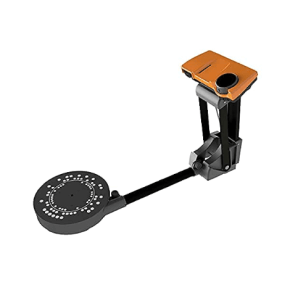
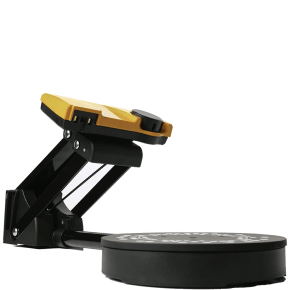
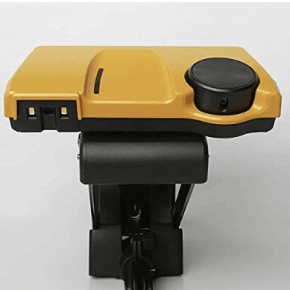
- Great for capturing small objects
- Very affordable
- Easy to move around
- Not suitable for scanning mid-sized or large objects
The SOL is a desktop 3D scanner perfect for capturing the details of small objects. It comes with a rotatable turntable that enables capturing every angle of an object. In addition, it has two unique modes: Near and Far. The Near mode scans objects 100 mm in diameter and 100 mm in height, while the Far mode is more suitable for scanning objects up to 170 mm in diameter and 170 mm in height. It’s got great accuracy even though it costs below $1,000.
A 3D scanner best suited for small but very detailed objects, the SOL embodies the concept of small but mighty. Though it may weigh just about seven pounds (3.2 kg), it packs quite a heavy-duty scanning punch. Moreover, the fact that it’s a lightweight device means it doesn’t have to be confined to just your desktop or any other one space. It’s exceptionally easy to move around, so you really can scan anywhere and at any time.
The SOL comes with patented software from Scan Dimension, with which you can scan objects and import the scans as STL or OBJ files for slicing and printing. Product reviews indicate it’s one of the best 3D scanners for hobbyists who want to take up scanning and printing. But it is also a great 3D scanner for entrepreneurs, as they can scan their products and show them off in immersive 360° views. The SOL also provides ways to easily share scans and prints on social networks like Facebook.
Not one to limit its own use, the SOL has also been reported to be great for educational purposes, especially in STEM education. So, whether it’s business, education, or just a home hobby, the SOL is the perfect, all-around fit for all these needs. And perhaps even more.
BQ Ciclop

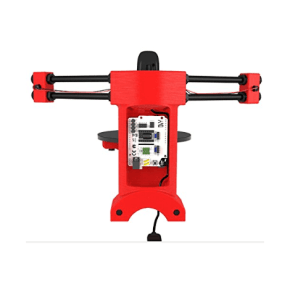
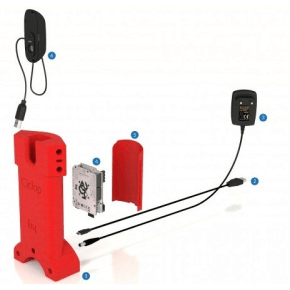
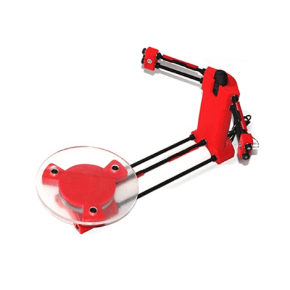
- Inexpensive
- 100% open-source
- Simple and effective
- Some features are too advanced for beginners
The Ciclop is a great gadget for homebodies with a flair for scanning and printing. The BQ Ciclop is completely open-source, meaning users have the opportunity to become active members of the 3D scanning open-source community. You can contribute to 3D scanning technology with this home scanner. It’s made up of 3D-printed parts itself; 10 of them, including a Logitech C270 webcam. It’s simple and effective, and you can customize it to your personal taste.
In a 3D laser scanner price comparison, the BQ Ciclop would actually be one of the cheapest on the market. However, despite its pricing and it being suitable for almost anyone thanks to its simplicity, some aspects are best left to the advanced users. For example, using the BQ Ciclop requires that you utilize various programs to make your scans into printable files like the STL format. That can be tricky sometimes if you have no background knowledge in scanning.
That could put a newbie off, especially an average user looking to start off a rather simple and productive hobby. However, here is where the BQ Ciclop being an open-source scanner has its benefits. The Ciclop has the best 3D scanner app for Android; called the Horus. This app was designed by the BQ community for scanning on the Ciclop and works to make scanning so much easier.
Software drawbacks aside, this is a great scanner for beginners and advanced users alike. It also comes with Bluetooth and USB connectivity. With the BQ Ciclop, you get affordability, an open-source community to connect to and learn from other users. Not to mention, scanning at home probably never felt so good as it does with this scanner.
HP Z 3D Camera Scanner

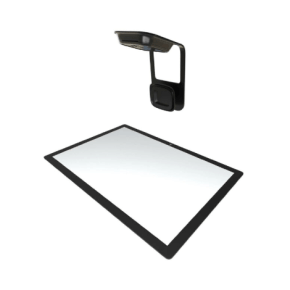
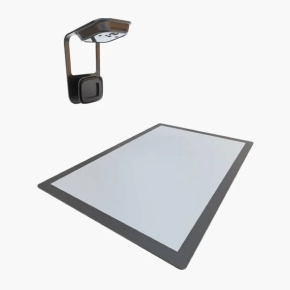
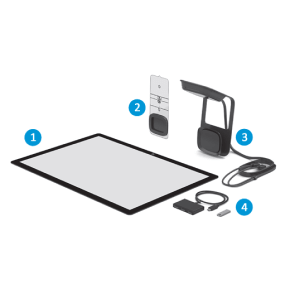
- Highly valued in the 3D-scanner community
- Very portable
- Scans objects in under five minutes
- May not appeal to buyers looking for bigger scanners
Very few scanners in the “under $1,000” price range get the kind of recommendations that the HP Z garners for itself. The Z is highly praised in 3D scanner reviews. What really makes it stand out is the fact that, unlike most 3D scanners, this nifty device is basically an attachment to the top of your monitor. But don’t let its looks deceive you - it packs some huge power.
This scanner costs under $600 and scans objects in under five minutes. That’s not only fast but for the results it produces, it’s also very efficient. It also scans in 2D and can convert documents into various formats. Weighing 1.2 lbs, it uses SLAM technology, which helps to render objects in 3D in real-time, without the need to go back and edit source data. It can also be used for live streaming.
Shining 3D EinScan SE

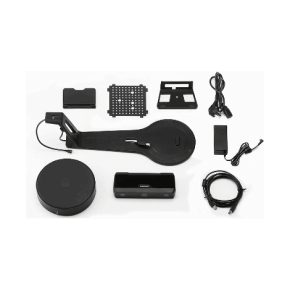
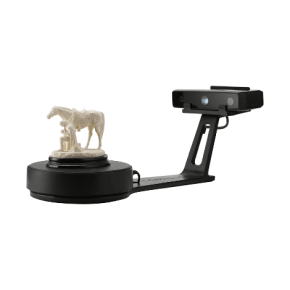
- Great functionality and accessibility
- Can scan 3D objects either with or without color
- Scans objects in under eight seconds
- Vulnerability to light
When it comes to the medium-range scanner category, manufacturer Shining has a ruling stake. The Shining 3D EinScan SE is indeed one of the best 3D scanners in the medium price range of scanners under $1,500. The EinScan SE is a valid entry into the world of quality desktop scanners, offering high-quality scans for educators and newcomers in 3D scanning.
Efficiency is a watchword, with the SE scanning objects in under eight seconds and rendering a scan in about two minutes. It has two scan features - a fixed scan mode and an automatic scan which can perform 360° scans on objects. Its accuracy clocks in at about 0.1 mm, which is considered very precise. In other words, you’ll get exceptional quality for your scans when you convert them into printables.
The EinScan SE is arguably the best 3D scanner for the money in its class. Its primarily automatic features and accompanying software make it suitable for teaching. It also supports automeshing. Accuracy, reliability, and ease of use are up for grabs when you opt for the EinScan SE.
Top 5 3D Scanners in 2025
- Matter and Form V2 MFS1V2
- SOL 3D Scanner by Scan Dimension
- Shining 3D EinScan SE
- HP Z 3D Camera Scanner
- BQ Ciclop
Our Evaluation Method for 3D Scanners
With so many product variations, finding the most suitable 3D scanner can be a challenging task. Before you decide to buy an industrial stationary or a small handheld 3D scanner, you should review each product using the following evaluation criteria. That’ll ensure you end up with nothing less than a scanner that’s ideal for your particular 3D project.
Cost
Given that the prices of 3D scanners can vary significantly, we made sure to evaluate the costs of the scanners over their performances.
While the starting price of desktop and handheld scanners is under $200 for entry-level solutions, these devices can cost you up to $50,000 (desktop) and $100,000 (handheld) if you opt for the most advanced high-end solutions.
As far as the best industrial 3D scanner offerings go, these products will set you back at least a few thousand dollars - the most affordable options start at $1,000 and the prices can go up to $100,000 for the most feature-rich 3D scanners.
Accuracy and Resolution
No 3D scanner review would be complete if it didn’t take features such as accuracy and resolution into account. In their own ways, both of these factors determine the quality of the finished product.
The accuracy of a hand scanner typically ranges between 0.01 mm and 0.1 mm. But what does that actually mean? Accuracy refers to how close to the actual object we have come in replicating it virtually.
While accuracy is the measurement of an industrial, stationary, or handheld 3D scanner’s correctness degree, the resolution represents the minimum possible distance between any two given points within a three-dimensional model. Resolution is normally expressed by millimeters, or microns. If your aim is to create an extremely detailed 3D model, you’ll need a high-resolution 3D scanner to acquire the object’s image.
Choosing a device with excellent accuracy and resolution features is especially important for applications in quality control, forensics, VR and animation, heritage preservation, and jewelry creation. If you want to speed up your workflow by creating new parts that reference or incorporate an existing design, you’ll need the best 3D scanner for reverse engineering.
Scanning Technology
The type of scanning technology also determines functionality. There are quite a few physical principles 3D scanners are based on. The most common scanning technologies are laser triangulation 3D scanning, structured light 3D scanning, photogrammetry (also referred to as 3D scanning from photographs), contact-based 3D scanning, and laser pulse. If you’re looking for the best budget 3D scanner, we suggest you explore the three-dimensional scanning devices based on laser triangulation technology.
Scanning Dimensions
Considering scanning dimensions is crucial when deciding exactly what type of scanner to opt for.
3D scanners share several features with all kinds of cameras - both device types have a cone-like field of view and can only collect information about surfaces within their field of view. You may have the best 3D laser scanner, but its high accuracy and crisp resolution capabilities won’t do you any good if the device can’t capture the exact size of the object you need virtually replicated.
Frequently Asked Questions
FAQ
The price of a 3D scanner depends on what you intend to use it for. Industrial scanners usually cost more than home or desktop scanners and will set you back several thousand dollars, while entry-level scanners have the most affordable 3D scanner prices, starting at $200.
Thanks to their ability to capture the surface of physical objects quickly and precisely, 3D scanners are commonly used in engineering, manufacturing, and industrial design. Without these innovative devices, measurements would have to be taken manually, in a much less efficient manner.
This depends on the type of scanner involved. An accuracy spec for a tripod scanner might pale in comparison to that of the best handheld 3D scanners. However, portable scanners usually have an accuracy of between 0.01 mm and 0.1 mm. Professional scanners usually have higher accuracy, but they cost much more.
Scanning software is one hidden cost responsible for the high cost of a 3D scanner. It’s actually the costs involved in the development of the software, that is, software developer salaries, that contribute to the costliness. The cost of producing the best 3D scanner is not the only thing that determines its price. The distribution network also takes its share. Finally, warranty costs, research and development of scanners, as well as marketing are all elements contributing to the high price of these scanners.
Your email address will not be published.
![$row['title'] - image](https://trinity-core-s3.s3.us-west-1.amazonaws.com/kommandotech/2204/MFS1V2-front.png)
![$row['title'] - image](https://trinity-core-s3.s3.us-west-1.amazonaws.com/kommandotech/1546/SOL-3D-Scanner-front.png)
![$row['title'] - image](https://trinity-core-s3.s3.us-west-1.amazonaws.com/kommandotech/1547/BQ-Ciclop-front.png)
![$row['title'] - image](https://trinity-core-s3.s3.us-west-1.amazonaws.com/kommandotech/1549/HP-Z-3D-Camera-Scanner-front.png)
![$row['title'] - image](https://trinity-core-s3.s3.us-west-1.amazonaws.com/kommandotech/1550/Shining-3D-EinScan-SE-front.png)